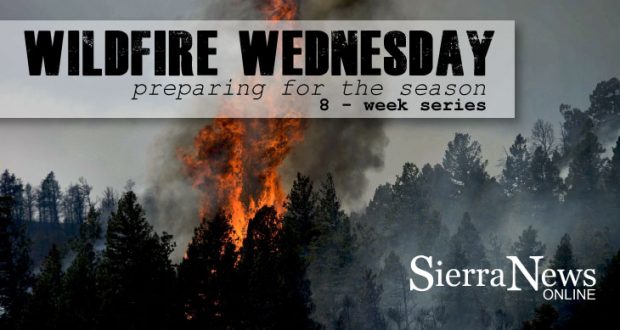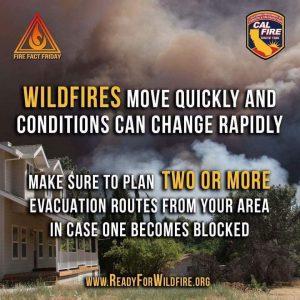This is the first in a series of articles SNO will be doing called “Wildfire Wednesday.” To begin, there will be 8 articles presenting “The 12 Step Guide to Help Plan in Advance for Evacuation.” This guide was put together by Katie Hepler and the members of the California Fire Support Group on Facebook. The California Fire Support Group is “intended to allow collaboration between those who have been through the fire and recovery process, and those who want to be prepared or are currently experiencing a fire.” Katie Hepler got involved in wildfire relief and recovery in 2015 when the Butte Fire devastated the community of Mountain Ranch and Calaveras County.
MOUNTAIN COMMUNITIES — Wildfire season is just around the corner and being prepared is vital for keeping your family and community safe. Following is Step 1 from “The 12 Step Guide to Help Plan in Advance for Evacuation.” This guide was put together by those who have experienced evacuations firsthand. The guide is set up in a way that encourages you to do the work now, ahead of time, so if and when you need to evacuate, you will be able to do so quickly and safely.
Step 1: Make an Evacuation Plan
Area Escape Plan
Once you’re out of your home, make sure you know who is leaving and how. In the event that you have multiple options, plan ahead who and what is going in which vehicle. Make sure to know the best way out of your area. You may live in a fairly rural location with few options, or you may live in a city with what seems like endless routes. Have at least 2-3 different ways planned out of your area.
Have these plans prepared and printed on paper maps that can be kept in your binder (STEP 2). Why paper maps? You may not have phone service and your mapping apps may not work, leaving you blind to all your options. If you live in a rural location, you may also want to get creative and experiment with forest roads or other uncommon paths that may become vital to you in an emergency. Please do your research prior to trying any unconventional roadways to make sure they are safe, passable, and that your vehicle is suited for it.
Communication Plan
Here is an easy way to print your maps, make sure to check the routes ahead of time and that they currently exist:
Having a designated meeting spot if you get separated from your family is very important. Also plan to have at least one backup spot in case your original spot is compromised. Consider designating an out-of-town loved one as a main point of contact. You may not have cell phone service, but maybe you can locate a phone to call this contact. They can keep a tally on everyone who has reported in safe and where they are since you may not be able to contact each other directly.
With this plan, also consider places you may stay if you are displaced for an extended period of time. You may have multiple people, individuals with special needs, or animals with you. Not everyone is able to simply check in to a hotel. Make sure to have some creative solutions in mind, do your research, know that things may get rough and you may need to be flexible.
Visit these websites for more information on preparing for wildfire:





